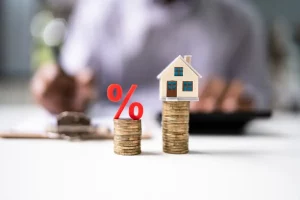Considering investment options in 2024? Wondering if buy-to-let property in the UK is still a viable strategy?
With shifting market dynamics, regulatory changes, and economic uncertainties, it’s crucial to carefully evaluate the potential risks and rewards. This comprehensive guide will help you answer the lingering question: Is buy-to-let worth it?
Gain insights into the pros and cons, financing options, and key factors to improve your returns. Whether seasoned or new, understanding today’s buy-to-let market nuances is essential for informed decisions and maximising investment potential.
4 Pros of Buy-to-Let Investing
Buy-to-let (BTL) has remained a compelling option when it comes to investing. This investment strategy offers several advantages that make it an attractive option for both novice and experienced investors alike.
Here are the pros of BTL property investment:
- Steady stream of income
- Long-term capital appreciation
- Higher demand for rental properties
- Leverage through mortgage financing

1. Steady Stream of Income
One of the primary benefits of buy-to-let investing is the potential for a stable monthly income. When you purchase a property and rent it out, you can expect regular rental payments from your tenants. This consistent cash flow from this passive income investment can provide financial security and help offset your mortgage payments and other property-related expenses.
As rental demand remains high in many UK areas, you may be able to increase rent over time, boosting income potential.
2. Long-Term Capital Appreciation
While the property market can experience short-term fluctuations, historically, UK property values have shown a tendency to appreciate over the long term. By investing in a buy-to-let property, you’re not only generating rental income but also potentially building equity as your property increases in value. Liverpool property investments offer significant potential for capital appreciation due to ongoing regeneration projects and high rental yields.
This dual benefit of income and capital growth makes buy-to-let an attractive option for those looking to build wealth over time. However, past performance doesn’t guarantee future results. Consult with property investment experts to research local market conditions.
3. High Demand for Rental Properties
The UK continues to experience a strong demand for rental properties, driven by factors such as population growth, changing lifestyle preferences, and affordability issues in the housing market. This persistent demand can provide you with a sense of security, knowing that there’s likely to be a steady pool of potential tenants for your property.
Additionally, by carefully selecting properties in areas with high rental demand, you can potentially minimise void periods and maximise your rental yields.
4. Leverage Through Mortgage Financing
One of the unique advantages of buy-to-let investing is the ability to leverage your initial investment through mortgage financing. This means you can potentially purchase a property with a relatively small amount of your capital, using a mortgage to finance the remaining cost.
For example, when you partner with Baron & Cabot, you only need to put down a 20% deposit for a start, allowing you to invest in a property that’s 5x the value of your initial investment. This leverage can significantly amplify your returns if property values increase over time.
However, it’s crucial to remember that leveraging also increases risk, as you’re responsible for mortgage payments regardless of whether the property is occupied or if property values decrease. That said, let’s now consider the potential downside of buy-to-let investments.
3 Cons of Buy-to-Let Investing
While buy-to-let is worth it, given the numerous benefits we’ve outlined, it’s crucial to understand the potential drawbacks before committing your resources. As you consider this investment strategy, be aware of these significant challenges that may impact your returns and overall experience.
Here are the 3 major downsides of BTL investments:
- Limited access to immediate profit
- Higher stamp duty rates
- Regulatory challenges and responsibility

1. Limited Access to Immediate Profit
When you invest in buy-to-let properties, it’s important to recognise that immediate profits are often elusive. The initial costs associated with purchasing a property, such as legal fees, surveys, and necessary renovations, can be substantial. These upfront expenses can significantly delay your ability to generate positive cash flow from your investment.
You’ll also need to factor in ongoing costs such as property management fees, maintenance, and potential void periods when the property is unoccupied. These expenses can further erode your profit margins, especially in the early stages of your investment. It’s crucial to have a long-term perspective and sufficient financial reserves to weather these initial challenges.
2. Higher Stamp Duty Rates
As a buy-to-let investor, you’ll face higher stamp duty rates compared to those purchasing a primary residence. In the UK, the government has implemented a surcharge of at least 3% on stamp duty for additional properties, which can significantly increase your upfront costs.
This additional tax burden can impact your initial investment and extend the time to achieve profitability. You’ll need to factor these higher rates into your financial calculations when assessing the viability of a potential investment property. It’s advisable to consult with a tax professional to fully understand the implications of these higher rates on your specific property investment strategy.
3. Regulatory Challenges and Responsibilities
Buy-to-let investors must navigate an increasingly complex regulatory landscape. You’ll need to comply with various legal requirements, including safety regulations, energy efficiency standards, and tenant protection laws. Failure to adhere to these regulations can result in hefty fines and legal complications.
Additionally, as a landlord, you’ll have ongoing responsibilities to your tenants, including maintaining the property, addressing repairs promptly, and ensuring the property meets all legal standards. These obligations can be time-consuming and potentially costly, especially if you’re managing multiple properties. You can consider hiring a property management firm to help you handle these tasks.
Investing in BTL has both its perks and disadvantages, so it’s important to do proper research before purchasing any property. One factor that often comes up when deciding if buy-to-lets are worth it is mortgage — we discuss this in detail below.
Are Buy-to-Let Mortgages Worth It?
When considering property investment in the UK, buy-to-let mortgages often come to the forefront as a potential financing option. But are they truly worth it? Let’s analyse the pros and cons to help you make an informed decision.
Understanding Buy-to-Let Mortgages
Buy-to-let mortgages are designed for property investors intending to rent out their properties. These loans typically require a larger deposit and often come with higher interest rates compared to standard residential mortgages. However, they offer unique advantages that can make them attractive to savvy investors.
The Potential Benefits:
- Capital Leverage: Financing a buy-to-let property with a mortgage allows you to leverage your capital, spreading investments across multiple properties and potentially increasing overall returns.
- Tax Deductions: Interest on buy-to-let mortgages can often be deducted as an allowable expense from your rental income when calculating taxable profits. This can result in significant savings from mortgage interest tax relief, making your investment more profitable.
- Liquidity: Using a mortgage preserves your liquidity. By not using all your own money for the purchase, you maintain cash reserves for other investments, emergencies, or opportunities, providing financial flexibility.
- Higher Returns: Mortgages can amplify your returns on investment. If the property value increases, your return on equity can be higher when you’ve financed the property compared to purchasing it outright with your own money.
- Risk Management: Financing with a mortgage can spread your risk. By not committing all your capital to one property, you reduce the financial impact if the property underperforms.
Considerations and Challenges:
- Interest Costs: When financing a buy-to-let with a mortgage, you incur interest costs, which can reduce your overall profit. Over time, these costs can add up significantly compared to when you purchase outright with your own money.
- Market Fluctuations: Market fluctuations can impact your mortgage interest rates. Variable rates can increase unexpectedly, raising your monthly payments and potentially straining your cash flow.
- Higher Risk: Mortgages increase financial risk. If rental income doesn’t cover mortgage payments due to vacancies or tenant issues, you may struggle to meet your obligations, potentially leading to financial difficulties.
- Qualification Requirements: Securing a mortgage requires meeting stringent qualification criteria. Lenders assess your credit score, income, and financial stability, which can limit your ability to obtain financing.
- Equity Limitations: Building equity in a property takes longer with a mortgage than outright ownership. This lengthens the time it takes to gain complete financial control over the property and earn potential profits from capital appreciation.
Making an Informed Decision
Ultimately, the worth of a buy-to-let mortgage depends on your circumstances, financial goals, and risk tolerance. Before committing to this investment strategy, it’s essential to conduct thorough research and possibly seek professional advice.
At Baron & Cabot, we understand the complexities of property investment. Our team of experts can guide you through the process, helping you navigate the intricacies of buy-to-let mortgages and identify suitable investment opportunities. With our robust due diligence process, you can make informed decisions with confidence, potentially turning the challenges of buy-to-let into lucrative opportunities for wealth creation. Contact us now to learn more.
Remember, while buy-to-let mortgages can be a powerful tool for property investment, they’re not a one-size-fits-all solution. Careful consideration of your financial situation, market conditions, and long-term objectives is crucial to determining whether this path is right for you. There are other considerations you need to be aware of prior to investing in BTL, and we’ll talk more about these in the next section.

5 Steps to Take Before Investing in Buy-to-Let
Follow these preparatory steps to ensure success when investing in buy-to-let properties, making informed decisions and maximising returns.
You can determine if investing in buy-to-let is worth it by following these essential steps:
- Understand the financial metrics
- Research the neighbourhood
- Obtain mortgage pre-approval
- Consider all costs
- Consult with property investment experts
1. Understand the financial metrics
To make a sound investment, first grasp the key financial metrics of rental property investing. Focus on two primary indicators: Return on Investment (ROI) and cash flow.
ROI measures the efficiency of your investment by comparing the net profit to the initial cost. Calculate this by dividing your annual rental income (minus expenses) by the property’s purchase price. A higher ROI indicates a more profitable investment.
Cash flow, on the other hand, represents the net income generated by your property after all expenses are paid. Positive cash flow is essential for sustaining your investment long-term and weathering any unforeseen circumstances.
2. Research the neighbourhood
The location of your buy-to-let property can make or break your investment.
Conduct thorough research on potential neighbourhoods, considering the following factors:
- Safety: Investigate crime rates and trends in the area.
- Amenities: Assess the proximity to shops, restaurants, and public transportation.
- School Districts: Quality schools can attract long-term tenants with families.
- Future Development: Look for areas with planned improvements or upcoming projects that could increase property values.
Remember, a desirable neighbourhood can command higher rents and attract reliable tenants, ultimately boosting your ROI.
3. Obtain mortgage pre-approval
Before you start property hunting, secure a mortgage pre-approval.
This step will:
- Give you a clear idea of your budget
- Demonstrate to sellers that you’re a serious buyer
- Expedite the purchasing process once you find the right property
When seeking pre-approval, consider working with a mortgage broker or property investment expert who specialises in buy-to-let investments. They can help you navigate the complexities of investment property financing and potentially secure more favourable terms.
4. Consider all costs
Many novice investors overlook the full spectrum of costs associated with buy-to-let properties.
In addition to the purchase price and mortgage payments, factor in the following:
- Capital gains tax and insurance
- Maintenance and repairs
- Vacancy periods
- Property management fees (if applicable)
- Legal and accounting costs
By accounting for these expenses upfront, you’ll have a more accurate picture of your potential returns and avoid unpleasant surprises down the road.
5. Consult with property investment experts
To maximise your chances of success, consider partnering with property investment specialists like Baron & Cabot.
With years of experience in the UK market, they can provide invaluable insights on the following:
- Identifying high-potential areas for investment
- Navigating complex regulations and tax bill policies, which can be different for higher rate taxpayers and basic rate taxpayers
- Structuring your investment for optimal returns
By leveraging our expertise, you can make more informed decisions and potentially uncover opportunities you might have otherwise missed. Contact Baron & Cabot today!
Meanwhile, in addition to the outlined steps, there is more you can do to maximise your returns once you’ve identified and invested in a suitable BTL. Read on for more information!

Maximising Returns on Your Buy-to-Let Investment
To optimise investment as buy-to-let landlords, it’s crucial to employ strategic approaches that enhance both short-term cash flow and long-term wealth accumulation. By focusing on key areas, you can significantly boost your returns and create a sustainable property investment portfolio.
Follow these suggestions to ensure your buy-to-let is a good investment in terms of returns:
- Leverage property value appreciation
- Implement competitive rental pricing
- Minimise expenses and maximise efficiency
1. Leverage property value appreciation
An effective investment strategy involves leveraging the appreciation of property value to refinance and acquire new properties. As your property’s value increases, you can refinance it to release equity. This equity can then be used as a down payment for purchasing additional properties.
This strategy allows you to grow your real estate portfolio without needing substantial upfront capital each time. By continually reinvesting equity from appreciating properties, you can expand your investments and potentially enhance your overall returns, capitalising on the compounding effect of property appreciation.
2. Implement competitive rental pricing
Setting a competitive rental price is crucial for maximising your returns.
Here’s how to determine the right rent to charge for your BTL property:
- Conduct thorough market research to understand local rental rates
- Consider offering slightly below-market rates to attract high-quality, long-term tenants
- Regularly review and adjust your pricing strategy to remain competitive
While it may be tempting to set high rental prices, a competitive rate can lead to lower vacancy periods and reduced tenant turnover. This approach often results in higher overall returns due to consistent occupancy and lower management costs.
3. Minimise expenses and maximise efficiency
To truly optimise your returns, it’s essential to keep a close eye on expenses.
Consider the following recommendations:
- Implement energy-efficient upgrades to reduce utility costs
- Conduct regular maintenance to prevent costly repairs
- Consider using property management software to streamline operations
By reducing unnecessary expenses and improving operational efficiency, you can significantly increase your net rental income and overall return on investment.
Buy-to-let is still worth it if you can maximise your investment returns. By leveraging property appreciation to refinance, setting competitive rental prices, and optimising your operational efficiency, you can create a robust and profitable property portfolio that will stand the test of time. At Baron & Cabot, we are always available to help you achieve your investment goal. Contact us now to learn more.
Frequently Asked Questions
Is buy-to-let worth it in 2024 in the UK?
In 2024, buy-to-let in the UK is still worth it despite higher income tax. Rental yields have increased for 3 consecutive quarters, now averaging 6.9% across England and Wales.
What are the pitfalls of buy-to-let UK?
The pitfalls of buy-to-let in the UK include compliance with extensive legislation, the risk of bad tenants who may damage property or fail to pay rent, and paying tax on rent income.
Can you live off of rental income?
Yes, you can live off rental income if you cover your expenses and maintain a positive cash flow. Many people invest in real estate for long-term financial security, achieving a steady stream of passive income.
Is buy-to-let dead in the UK?
Buy-to-let in the UK isn’t dead, but it’s struggling. According to Mark Farrell of Bishops Estate Agents, the market share has halved from 20% to 10%, indicating significant challenges. However, house prices have historically appreciated over the last decade, indicating a prospect.
Conclusion
So, is buy-to-let worth it?
While buy-to-let investing has challenges, it remains potentially lucrative for those with a long-term view and strategic approach. By staying informed, adapting to market changes, and leveraging professional expertise, you can position yourself to benefit from the enduring value of UK property investment.
Contact us now for expert guidance on how you can invest in the buy-to-let market for maximum returns!
Disclaimer: Any information provided by Baron & Cabot does not constitute financial advice and is for educational purposes only.

